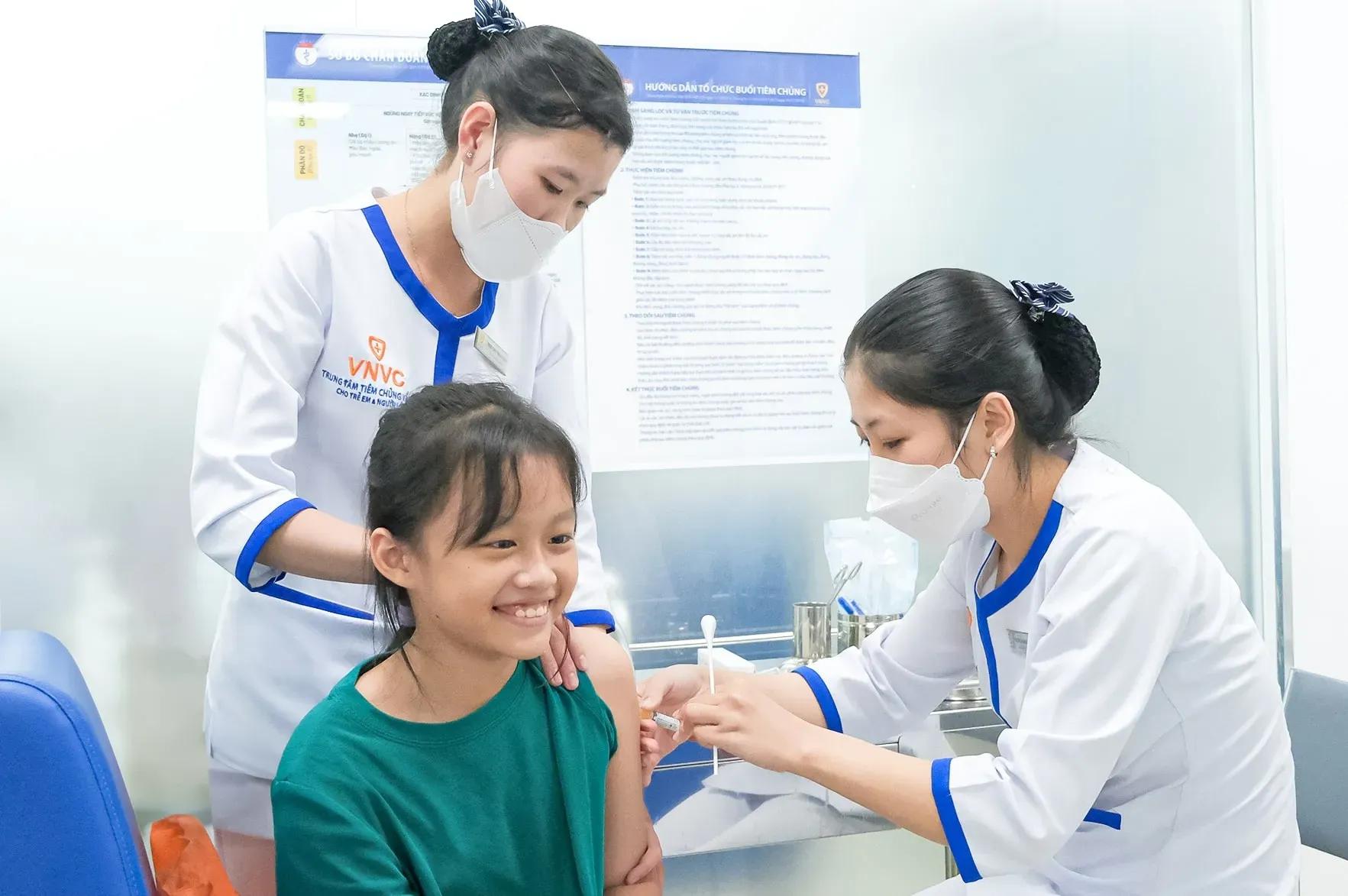Current expanded immunization process in Vietnam
By Van Vu
18/11/2024
The Expanded Immunization Program is a vaccination program that has been implemented since 1985 with the State's humanitarian policy of being free of charge. Currently, the EPI has 12 9 basic vaccines for children, adults have tetanus vaccine for pregnant women, a basic vaccine for children with a fixed vaccination schedule.

1. Current expanded immunization process
The expansion process is carried out in accordance with the Ministry of Health's comprehensive vaccination process with 4 basic steps, including:
- Step 1: Ask about medical history
- Identify name, age, address
- Ask about current health status
- Ask about medical history
- Ask, check vaccination card for vaccination history
- Step 2: Observe current health status
- Condition, skin color, mucous membranes
- Fever
- Step 3: Injection indication
- Step 4: Vaccination consultation
- Announcement of vaccines that children will receive, the disease prevention ability of vaccines
- Instructions on how to monitor and care for children after vaccination
- Explain possible reactions after injection
- Schedule your next vaccination
2. Expanded immunization schedule
12 vaccines to prevent dangerous and common infectious diseases for Vietnamese children are included in the Expanded Immunization Program with the following vaccination schedule:
Months old | Vaccines need to be injected/taken orally | Injection/oral schedule |
Newborn | Monovalent hepatitis B vaccine | Neonatal dose: Inject within 24 hours after birth |
Tuberculosis vaccine (BCG) | 01 injection within 1 month after birth | |
2 months old | SII 5-in-1 combination vaccine prevents hepatitis B, diphtheria, whooping cough, tetanus, and diseases caused by HiB | First injection when the child is 2 months old |
Polio vaccine | Drink 1 time | |
3 months old | SII 5-in-1 combination vaccine prevents hepatitis B, diphtheria, whooping cough, tetanus, and diseases caused by HiB | 2nd injection |
Polio vaccine | Drink 2 times | |
4 months old | SII 5-in-1 combination vaccine prevents hepatitis B, diphtheria, whooping cough, tetanus, and diseases caused by HiB | 3rd injection |
Polio vaccine | Drink 3 times | |
9 months old | Measles vaccine | First injection |
18 months old | SII 5-in-1 combination vaccine prevents hepatitis B, diphtheria, whooping cough, tetanus, and diseases caused by HiB | 4th injection |
Measles-rubella (MR) vaccine | First injection | |
From 12 months | Japanese Encephalitis Vaccine | – 1st dose: When the child is 12 months old – 2nd dose: 2 weeks after 1st dose – Dose 3: 1 year after dose 2 |
2 – 5 years old | Cholera Vaccine (high risk areas) | Take 2 times 2 weeks apart |
3 – 10 years old | Typhoid Vaccine (high risk areas) | Single injection |
Tetanus vaccine for pregnant women | ||
– Get vaccinated as soon as possible during first pregnancy or in women aged 15-35 years in areas at high risk of neonatal tetanus. – Dose 1: First injection – 2nd dose: 1 month after 1st dose – 3rd dose: 6 months after 2nd dose / during subsequent pregnancy – Dose 4: 1 year after dose 3 / during the following pregnancy – Dose 5: 1 year after dose 4 / during the following pregnancy | ||
3. Should we choose expanded vaccination or service vaccination?
Children can be vaccinated at the Expanded Immunization Program as recommended by the Ministry of Health. However, it is necessary to combine many other types of vaccines currently available at vaccination service points to fully prevent other dangerous infectious diseases that the Expanded Immunization Program does not have vaccines for, such as chickenpox, pneumonia, pneumococcal meningitis, influenza, meningococcal meningitis, pneumonia, purulent meningitis caused by HiB, etc.
The combination of expanded vaccination and service vaccination not only optimizes the cost of vaccination but also brings higher prevention efficiency, larger prevention coverage, and protects children from more dangerous infectious diseases.
4. Where to register for expanded vaccination?
The expanded immunization program has been implemented in 100% of communes and wards nationwide since 1995. Therefore, you can register for expanded vaccination at the commune/ward health stations where you are temporarily residing (you can register for vaccination regardless of permanent residence) to declare information and register for vaccination for your child.
If you are a foreigner who needs to use medical services while traveling in Vietnam, your medical benefits will be supported as Vietnamese citizens. To ensure your medical benefits are best guaranteed, you should go with an interpreter to exchange and receive information fully and effectively.
© Copyright of articles belongs to the author group of iguide.ai or cited as required.
Articles by iguide.ai For reference only, not a substitute for diagnosis or treatment.
References:
- History of TCMR | EXPANDED IMMUNIZATION PROGRAM. (2024). Tiemchungmorong.vn. https://www.tiemchungmorong.vn/vi/content/lich-su-tcmr.html
- Immunization. (2018). Unicef.org. https://www.unicef.org/vietnam/immunization
How to recognize early signs of diabetes
By Van Vu
02/11/2024
Diabetes mellitus, commonly known as diabetes, is a metabolic disorder in which the body cannot tolerate glucose, leading to higher than normal blood sugar levels.
When traveling in Hanoi Vietnam where to examine and treat diabetes?
By Van Vu
02/11/2024
Diabetes is a disease that requires long-term treatment, with a treatment regimen appropriate to each person's condition. Patients should go to hospitals and clinics with expertise in Diabetes to be tested, diagnosed and properly treated.
Pocket notes when traveling to Vietnam for people with diabetes
By Van Vu
03/11/2024
To have a perfect trip, people with diabetes will need to prepare more carefully than people with normal health. So what are the things that people with diabetes need to ensure for a perfect trip? Here are some notes when traveling to Vietnam for people with diabetes.
Guidelines for diagnosis and treatment of type 2 diabetes for travelers
By Van Vu
03/11/2024
The characteristics of complications of type 2 diabetes are closely related to the process of disease development. Therefore, at the time of clinical detection of the disease, the physician must look for complications of the disease. Regarding the classification of complications, it is possible to divide them into acute and chronic complications. In chronic complications, it is divided into large blood vessel complications and small blood vessel complications.




